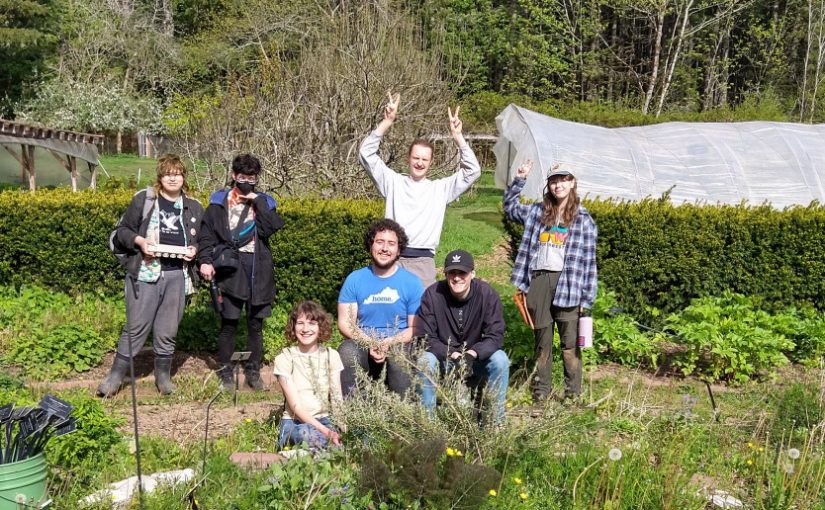Another busy week! The weather seems to be warming-up and the rain has been slowing down a bit. Though I think we are in for a few more weeks of slightly lower temperatures and increased precipitation, I’m much less worried about putting seedlings in the ground. Even though the community garden has a few weeks before needing access to constant water, I took the opportunity to speak with Caleb Poppe about what will need to be done to supply the garden with irrigation. Because it has been raining so often, I will be pushing this project to week nine.
I also received access to the community garden google group (Thanks Henry!), so I will be scheduling a garden-wide meeting to discuss next steps in operations and leadership. I plan to create the event this week, but schedule the meeting for Week Ten; hopefully, with enough lead-up time, we gardeners will have the opportunity to meet as one and create a functional leadership structure before the end of my internship.

Image Credit: Sarah Dyer
Monday afternoon, Zoe and I spent a couple of hours working on bed restoration in the herb garden. After finishing our weeding in the bed, we laid down brown paper and topped it with a thick layer of wood chips. We are hoping to continue this work on Monday afternoons going forward, at least mulching in half of the garden before the beginning of summer quarter.
On Tuesday evening, I met with my fellow SCARFers at the farmhouse to cook for our bake sale on Thursday. We baked cookies, dipped pretzels, and made cereal treats, all while enjoying each other’s company, singing, and watching movies.
Wednesday was volunteer day, and our group continued our work in the perennial rhubarb and asparagus bed. We are 80% complete with the project, but we are also entering the thickest, weediest part of the patch. The Canada Thistle, buttercup, and various other weeds have twisted themselves around the sprouting asparagus, making the work slow and painstaking. We are hoping to finish the work next week, when we will move on to the blueberry patch.
On Wednesday, Zoe and I attended the Food and Agriculture Pathway party and discussed our internship work with faculty and students. It was wonderful to touch on some of the exciting work we are doing this quarter, to talk about our student organization, and to generally celebrate the progress we’ve made towards our goals.
On Wednesday, I also met with Dr. Steve Scheuerell to briefly discuss his thoughts on rejuvenating Demeter’s Garden. One of his suggestions that should be put into play immediately is the occultation of at least some of the space. I will be following-up with Maleah Upah, the coordinator in charge of Demeter’s Garden, with hopes that we can use this cool, late spring as an opportunity to lay down tarping.

Image credit: Zoe Dewitt
Thursday was SCARF’s first bake sale! We hope to make this sale a weekly event that coincides with the farm stand. This fundraising money will be used to print club merchandise, as well as provide financial support to some of our other event ideas (Film at the Farm, anyone?). Additionally, the bake sale provides an opportunity for our club members to interact with the community and student body. We signed up two new members of our organization this week alone! Our club is also learning the ins and outs of cash handling, as well as boosting our skills in market design and customer service.

























